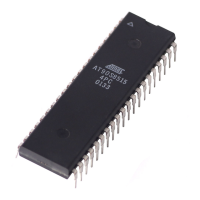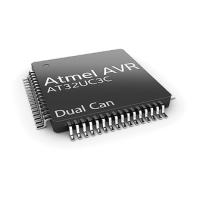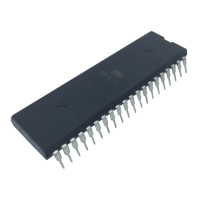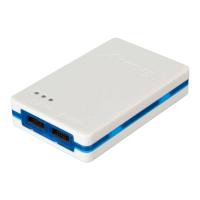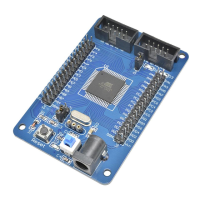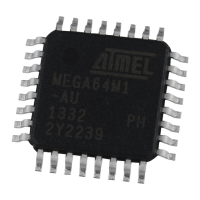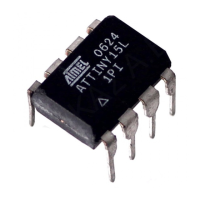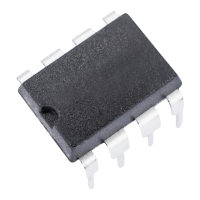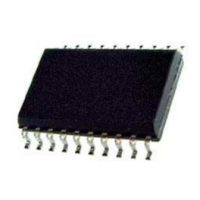The 8051 Instruction Set
Atmel 8051 Microcontrollers Hardware Manual 1-14
4316B–8051–02/04
low 11 bits in the PC. The high 5 bits stay the same. Hence the destination has to be
within the same 2K block as the instruction following the AJMP.
In all cases the programmer specifies the destination address to the assembler in the
same way: as a label or as a 16-bit constant. The assembler will put the destination
address into the correct format for the given instruction. If the format required by the
instruction will not support the distance to the specified destination address, a “Destina-
tion out of range” message is written, into the list file.
The JMP @ A + DPTR instruction supports case jumps. The destination address is
computed at execution time as the sum of the 16-bit DPTR register and the Accumula-
tor. Typically, DPTR is set up with the address of a jump table, and the Accumulator is
given an index to the table. In a 5-way branch, for example, an integer 0 through 4 is
loaded into the Accumulator.
The code to be executed might be as follows:
MOV DPTR, # JUMP_TABLE
MOV A, INDEX_NUMBER
RL A
JMP @ A + DPTR
The RLA instruction converts the index number (0 through 4) to an even number on the
range 0 through 8, because each entry in the jump table is 2 bytes long:
JUMP_TABLE:
AJMP CASE_0
AJMP CASE_1
AJMP CASE_2
AJMP CASE_3
AJMP CASE_4
Table 1-11 shows a single “CALL addr” instruction, but there are two of them -LCALL
and ACALL -which differ in the format in which the subroutine address is given to the
CPU. CALL is a generic mnemonic which can be used if the programmer does not care
which way the address is encoded.
The LCALL instruction uses the 16-bit address format, and the subroutine can be any-
where in the 64K Program Memory space. The ACALL instruction uses the 11-bit format,
and the subroutine must be in the same 2K block as the instruction following the ACALL.
In any case the programmer specifies the subroutine address to the assembler in the
same way: as a label or as a 16-bit constant. The assembler will put the address into the
correct format for the given instructions.
Subroutines should end a RET instruction, which returns execution following the CALL.
RETI is used to return from an interrupt service routine. The only difference between RET
and RETI is that RETI tells the interrupt control system that the interrupt in progress is
done. If there is no interrupt in progress at the time RETI is executed, then the RETI is
functionally identical to RET.
Table 1-12 shows the list of conditional jumps available to the Atmel 8051 user. All of
these jumps specify the destination address by the relative offset method, and so are
limited to a jump distance of -128 to + 127 bytes from the instruction following the condi-
tional jump instruction. Important to note, however, the user specifies to the assembler
the actual destination address the same way as the other jumps: as a label or a 16-bit
constant.

